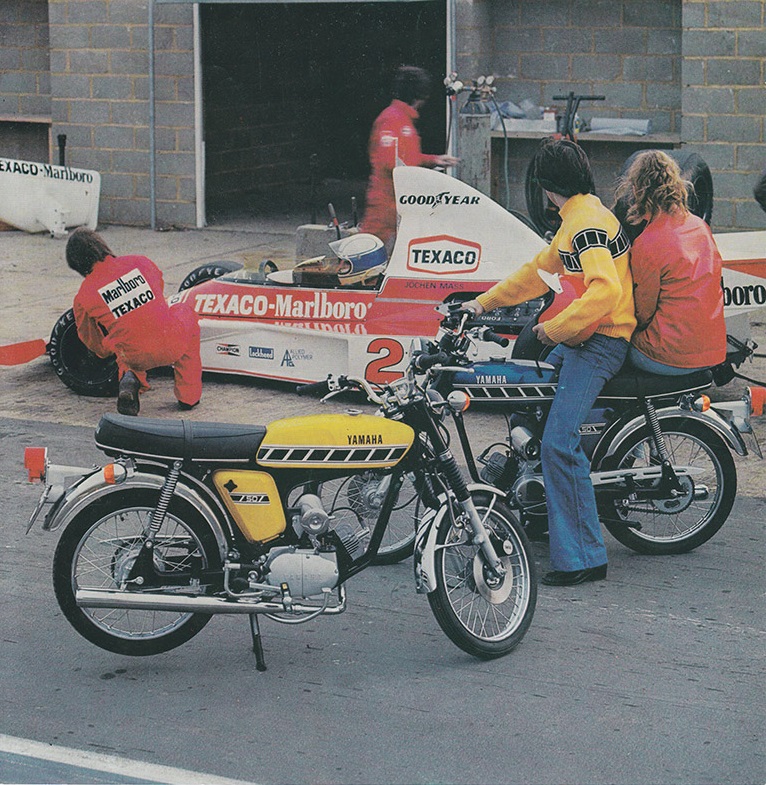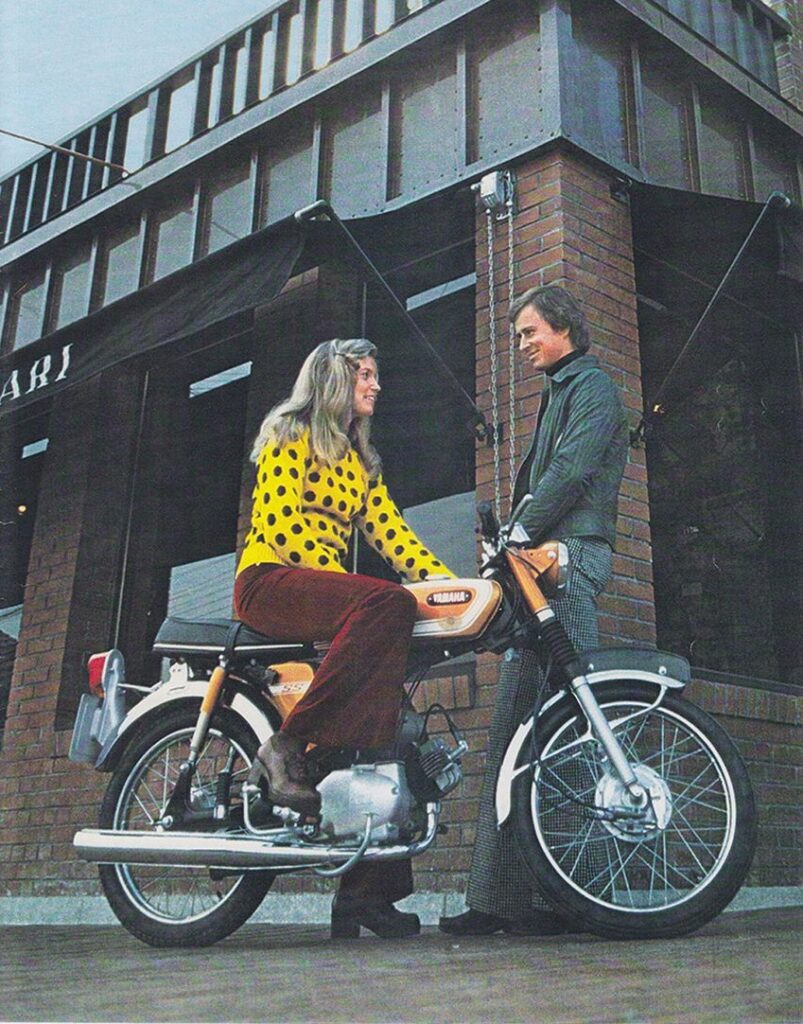Fifty years of the Yamaha F1S-E

Photo courtesy of Yamaha
Fifty years ago, a motorcycle was released that became many people’s first bike and remains beloved by them to this day. Bikesure takes a look at the Yamaha F1S-E and its enduring impact on motorcycle culture.
The year 1973 was full of glam rock and ABBA, who had made their debut at the previous year’s Eurovision, dominated the pop charts. It was the year the Wombles first debuted on TV and the first time Roger Moore starred as James Bond. And for the bike-mad teenagers of Britain it was the year Yamaha launched the F1S-E, a moped that quickly became a regular sight on the roads thanks to its good looks and nippy pace.
Why a moped became the must-have bike for the nation’s 16-year-olds is rooted in the bike culture that had grown up in the 50s and 60s. Motorcycles were a cheap form of transport for young people, but the youthful urge to push the limits saw some of them take risks on the roads with excessive speeds.
This saw the ‘ton-up boys’ and later ‘the rockers’ become something of a folk devil in the UK. It was one of the factors behind the government bringing in a new law in 1971 restricting 16-year-olds to only riding mopeds with an engine capacity no higher than 50cc. At the time, the moped’s image was of a simple machine, not much more than a bicycle with a small engine strapped to it, certainly nothing that could spur its users to dangerously high speeds. Problem solved, thought the government.
Yamaha redesigned the FS1 for the UK
 Photo courtesy of Yamaha
Photo courtesy of Yamaha
So it was that Yamaha took a bike they had been designing, down tuned it from five to four speeds, slapped a couple of pedals on it and unleashed it on the British roads in 1973. The FS1-E was the variant of the FS1 designed specifically for the UK, and while it absolutely complied with the letter of the law it was still a machine that could get you close to 60mph.
With its distinctive looks, sleek design and, of course, its ability to eat up the miles, the FS1-E – or the ‘Fizzy’ as it was dubbed by its devotees – became one of the most wanted bikes for teenagers, commuters and anyone looking for a cheap and reliable form of transport.
It sold around 7,500 units in its first year alone. Initially only available in candy gold, a vivid orange that was perfectly in keeping with the fashion of the time, it was joined in its second year by equally groovy 70s colours like baja brown, competition yellow, popsicle purple and cosmic blue. By 1976 only Baja Brown remained, which you could probably waffle on about at great length as an indication of the changes that took place in fashion in the UK during that time.
In 1977 the government finally realised they needed to give the laws about 16-year-olds another go, and decreed that while they could now ride mopeds without pedals, any 50cc bike had to be limited to a maximum speed of 31mph.

The 1977 models added a new auto-lube oil pump among other engineering and aesthetic tweaks including a new colour, which fittingly enough for the year when Star Wars made its first appearance was called space blue. However, even the introduction of vintage burgundy in 1978 couldn’t hold back the march of progress. While over 30,000 units were sold in the UK in the previous year, the new laws meant the ‘Fizzy’s’ speed wasn’t the selling point it once was, with around 13,000 units sold.
When Yamaha finally stopped production of the FS1-E in 1982 – the same year ABBA broke up, with a pleasing sense of historical symmetry – over 200,000 units had been sold, and it had cemented its place in British motorcycle culture. Its sleek design recalls the café racer look developed in the 60s, and the continued popularity of this style of bike today is due in no small part to the ‘Fizzy’.
Furthermore, the simplicity of the engine and mechanics made it the ideal platform for user customisation and modification, as well as providing a generation of riders with an introduction to repairing their own bike to keep it running.
And keep it running they did. While many of those young bikers moved on from their ‘Fizzies’, quite a few owners kept their first bike or rebought one later as nostalgia for it, and their available income, grew. The relative ease of finding spare parts gave it a long afterlife, which was given an extension when, in 1988, Yamaha once again started selling FS1-Es. Legend has it that this was down to the company re-ordering too many spare parts.
That said, as the ‘Fizzy’ reaches its half century, the supply of these spare parts is beginning to dry up and the inevitable march of time means that the cost of these classic bikes is going up, too. If you’re looking to recapture your youth you should expect to part company with a few thousand pounds for the bike itself, even before you factor in any replacement parts you’d need to get it back into working condition.
Luckily the FS1-E owners club is full of people sharing their knowledge and experience of restoring the bike, and there are plenty of models on sale if you feel like reliving the glory years when mopeds ruled the roads.
Outstanding insurance for your motorbike
If you have a Yamaha that stands out from the crowd, you’ll be looking for stand out insurance too, so it’s good to know the team at Bikesure can help find motorcycle cover that meets your precise circumstances and needs. For a swift no obligation quote call 0330 123 1028 or arrange a callback at a time that’s more convenient for you.






